Unit 31 . Medicines or pharmaceuticals
UNIT 31 . MEDICINES OR PHARMACEUTICALS
In this unit:
· talking about medicines
· speaking on research and testing drugs
· discussing the ways of taking drugs
· Present Simple vs Present Continuous
READING
Read the text and answer the following questions.
1. What do we call medicines?
2. What were medicines historically made from?
3. What do pharmaceutical companies do to make a new drug?
4. How long does making a new drug take?
MEDICINES OR PHARMACEUTICALS
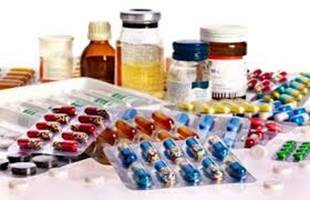
We often take medicine, also called pharmaceuticals, when we are sick. Pharmaceutical preparations are chemical substances that help to cure, prevent, or relieve the symptoms of illnesses.
What are medicines made from? Historically medicines have been made from natural sources such as plants, animals, molds, bacteria, and minerals. A lot of medicines are still made from natural sources, especially plants. However, most medicines are "synthetic" ones. This means that they are made by chemists in labs.
In order to make a new drug, pharmaceutical companies do a lot of research and testing. The first step in making a new drug is research. Scientists study what causes a disease or a symptom. They may study the pathogens (germs) that cause a disease or what makes a certain symptom occur. They then run experiments in the lab to see what chemicals may work. They also use supercomputers to run computer models.
The next phase is testing on animals. Once they have had success in testing on animals, they will apply to the FDA(Food and Drug Administration) for approval to begin testing on humans.
Testing on humans takes place in three phases. In the phase I trials, the drug is tested for safetyon a small group of 20-80 people. In the second phase, the drug is tested on 100-300 people for efficacy. Efficacy is a measurement of how well the drug works. Some people take the actual drug while others take a placebo. A placebo is just a sugar pill with no real drugs in it. This phase helps researchers determine if the drug is truly effective. In the third phase, much larger groups of people are tested, typically over 1,000. The effectiveness and side effects are further determined during this phase.
If the trials are successful, then the pharmaceutical company will apply to the FDAfor a New Drug Application. If the FDA approves, then the drug can be sold.
Making a new drug takes many years and typically costs millions of dollars. In the United States, the government has regulationsin order to insure that drugs are as safe as possible. Companies must run certain tests and pass requirements before they can sell a drug.
Most legal drugs can be divided into two categories. Prescription drugs require approval from a doctor to purchase. They are handed out by pharmacists who insure that the correct doses are given and that people understand the proper way to take the drug.
Over the counter drugs can be purchased without a prescription. Examples of these include pain relievers such as Advil and aspirin, cough syrup, and sinusmedicine.
Pharmaceutical drugs can be administered by a number of methods including pills, shots, creams, eye drops, inhalers, mists, and through an IV (intravenous). Most drugs have side effects. You should always read the labels of any drugs you take and follow the instructions, doses, and warnings. If you experience any side effects, stop taking the drug immediately and contact your doctor. Just because a drug is "safe" and "over the counter" you must still follow the instructions. Taking too much of any drug is very dangerous and can even kill you. Kids should never take medicine without the help of a parent, nurse, or doctor.
VOCABULARY PRACTICE
Match the synonyms. 3. Match the antonyms.
| 1. study | a. germ | 1. synthetic | a. actual drug | |
| 2. pathogen | b. to buy | 2. OTC | b. dangerous | |
| 3. trial | c. to take place | 3. safe | c. sickness | |
| 4. to purchase | d. research | 4. placebo | d. prescription drug | |
| 5. to occur | e. test | 5. health | e. natural |
Translate the text in written form.
__________________________________________________________________________________________________________________________________________________________________________________________________________________________________________________________________________________________________________________________________________________________________________________________________________________________________________________________________________________________________________________________________________________________________________________________________________________________________________________________________________________________________________________________________________________________________________________________________________________________________________________________________________________________________________________________________________________________________________________________________________________________________________________________________________________________________________________________________________________________________________________________________________________
LANGUAGE DEVELOPMENT
Answer the questions.
1. What is the difference between natural and synthetic medicines?
____________________________________________________________________________________________________________________________________________________________
2. What do pharmaceutical companies do to make a new drug?
____________________________________________________________________________________________________________________________________________________________
3. What is the first phase in making drugs characterized by?
____________________________________________________________________________________________________________________________________________________________
4. Which procedure helps to begin testing a new drug on humans?
____________________________________________________________________________________________________________________________________________________________5. How many and what phases does testing on humans take place?
____________________________________________________________________________________________________________________________________________________________
6. What two categories of legal drugs are there?
____________________________________________________________________________________________________________________________________________________________
2. Do you know that …
· The first known heart medicine was discovered in an English garden. In 1799, physician John Ferriar noted the effect of dried leaves of the common foxglove plant (наперстянка), digitalis purpurea, on heart action. Still used in heart medications, digitalis slows the pulse and increases the force of heart contractions and the amount of blood pumped per heartbeat.
· Around 50% of medicines purchased from illegal websites over the internet are counterfeit?
· Finding and developing new medicines takes around 10 to 12 years and it costs around £550 million from its discovery to gaining a licence?
· Placebo still works even though you know its a placebo.
GRAMMAR IN USE
1. Put the verbs into the correct tense (present simple OR present continuous):
1. The train always ________________(leave) on time.
2."What's the matter? Why ________________(cry/you)?"
3. That's strange. They________________(not to watch) TV.
4. He________________(not to speak) very good English.
5. Please be quiet! I________________(do) my homework.
6. Where________________(live/they)?
7. Listen! John ________________ music! (play)
8. I never ________________(go) to the swimming pool.
Harold Black's a famous pianist. He________________(give) two or three concerts every week. He ________________(travel) a lot and this week he's in New York. He________________(stay) at an expensive hotel. He's at his hotel now. He________________(have) his breakfast in the dining−room. He________________(drink) a cup of coffee and he________________(read) a newspaper. Harold's always very busy. He________________(play) the piano regularly. He________________(practise) for four hours every day. He________________(go) to bed late and he always ________________(get up) early. But he sometimes________________(get) dressed too quickly, and this morning he________________(wear) one blue sock and one red one!
WORDS AND EXPRESSIONS
| approval (n) | ||
| cough syrup | ||
| efficacy (n) | ||
| FDA (Food and Drug Administration) | Управление по контролю за продуктами и лекарствами (США) | |
| inhaler (n) | ||
| insure (v) | ||
| measurement (n) | ||
| mist (n) | аэрозоль | |
| mold (n) | ||
| pill (n) | ||
| placebo (n) | плацебо, индифферентное вещество (применяемое для психотерапии или в качестве контроля в эксперименте) | |
| purchase (n) | ||
| regulations (n) | ||
| relieve (v) | ||
| safety (n) | ||
| shot (n) | инъекция | |
| sinus (n) | ||
| synthetic (adj) | ||
| to be handed out (v) | ||
| trial (n) | ||
| warning (n) |
UNIT 32 . HOW DRUGS WORK
In this unit:
· learning the concept of ADME
· discussing the ADME stages
· Past Simple vs Past Continuous
READING
The first stage of ADME is A, for absorption. Medicines are absorbed when they travel from the site of administration into the body's circulation. A few of the most common ways to administer drugs are oral (such as swallowing an aspirin tablet), intramuscular (getting a flu shot in an arm muscle), subcutaneous (injecting insulin just under the skin), intravenous (receiving chemotherapy through a vein), or transdermal (wearing a skin patch). Medicines taken by mouth are moved via a special blood vessel leading from the digestive tract to the liver, where a large amount of the medicine is broken down. Other routes of drug administration bypass the liver, entering the bloodstream directly or via the skin or lungs.
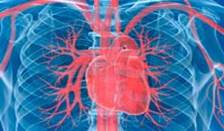
Once a drug gets absorbed, the next stage of ADME is D, for distribution. Most often, the bloodstream is the vehicle for carrying medicines throughout the body. During this step, side effects can occur when a drug has an effect at a site other than its target. For a pain reliever, the target organ might be a sore muscle in the leg; irritation of the stomach could be a side effect. Drugs for the central nervous system face a nearly impassable obstacle called the blood-brain barrier that protects the brain from potentially dangerous substances such as poisons or viruses. Fortunately, pharmacologists have devised various ways to deliver some drugs past the blood-brain barrier.
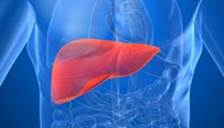
After a medicine has been distributed throughout the body and has done its job, the drug is broken down, or metabolized, the M in ADME. Everything that enters the bloodstream - whether swallowed, injected, inhaled or absorbed through the skin - is carried to the body's chemical processing plant, the liver. There, substances are chemically transformed by proteins called enzymes. Many of the products of enzymatic breakdown, or metabolites, are less chemically active than the original molecule. Genetic differences can alter how certain enzymes work, also affecting their ability to metabolize drugs. Herbal products and foods, which contain many active components, can interfere with the body's ability to metabolize drugs.

The now inactive drug undergoes the final stage of its time in the body, excretion, the E in ADME. This removalhappens via the urine or feces. By measuring the amounts of a drug in urine (as well as in blood) over time, clinical pharmacologists can calculate how a person is processing a drug, perhaps resulting in a change to the prescribed dose or even the medicine. For example, if the drug is being eliminated relatively quickly, a higher dose may be needed.
VOCABULARY PRACTICE
LANGUAGE DEVELOPMENT
GRAMMAR IN USE
Choose the correct word.
Dave: Hi, Jenny, what (1) did you do / are you doing last weekend?
Jenny: I (2) was going / went to a party.
Dave: (3) Did / Do you have a good time?
Jenny: Yes, I really (4) am enjoying / enjoyed it. I (5) met / was meeting this really nice guy. His
name’s Danny.
Dave: Oh, yes?
Jenny: I (6) was talking / talked to my friend Paula, when Danny (7) asked / was asking me to
dance.
Dave: Where’s he from?
Jenny: Liverpool, but he (8) lives / lived in London at the moment.
Dave: How (9) does he know / is he knowing Paula?
Jenny: They (10) are going / go to swimming club together.
Dave: So, (11) are / were you seeing him again?
Jenny: Yes, we (12) go / are going to the cinema tonight.
Dave: Great. Have a good time.
WORDS AND EXPRESSIONS
| administration (n) | ||
| alter (v) | ||
| bypass (n) | ||
| calculate (v) | ||
| chemotherapy (n) | ||
| design (n) | ||
| devise (v) | ||
| distribution (n) | ||
| eliminate (v) | ||
| enzymatic (adj) | ||
| enzyme (n) | ||
| excretion (n) | ||
| impassable obstacle | ||
| interfere (v) | ||
| intramuscular (adj) | ||
| intravenous (adj) | ||
| irritation (n) | ||
| measuring (n) | ||
| metabolize (v) | ||
| pain reliever | ||
| past (adv) | ||
| patch (n) | ||
| pharmacokinetics (n) | ||
| refer to (v) | ||
| removal (n) | ||
| route (n) | ||
| site (n) | ||
| subcutaneous (adj) | ||
| swallowing (n) | ||
| transdermal (adj) | ||
| vehicle (n) |
READING
VOC ABULARY PRACTICE
LANGUAGE DEVELOPMENT
GRAMMAR IN USE
Choose the correct verb.
- … (Have you ever been/Did you ever go) to England?
- Yes, I … (have been/went) to Oxford last spring.
- … (Have you liked/Did you like) the city?
- Yes, I … (have/did). I … (have visited/visited) a lot of colleges there.
- And … (have you been/did you go) to London?
- No, but I … (have already bought/already bought) the tickets to London.
The following questions with verbs in the Present Perfect have two variants of answers, both in the Past Simple and Present Perfect. Open the brackets, be careful, complete the sentences if necessary.
E.g.: Have you read that book? – No, I _______________ (No, I haven’t )
Yes, I ______________ it last year. (Yes, I read it last year.)
Ты читал эту книгу? – Нет, не читал.
Да, я читал ее в прошлом году.
1. Have you fed the cats? – Yes, I ____________ / Yes, I _____________them before dinner.
2. Has she ever eaten snails? – No, she ____________ / Yes, she ____________them in Italy
last summer.
3. Have they found the photos? – No, they _____________ / Yes, they _____________ them
yesterday.
4. Have you planted the tulips? – No, I ____________ yet. / Yes, I ____________them on Friday.
5. Has he already seen your garden? – Yes, he ____________ / Yes, he ___________ it a month
ago.
WORDS AND EXPRESSIONS
| addictive (adj) | ||
| additive (adj) | ||
| array (n) | ||
| buccal (adj) | ||
| capsule (n) | ||
| chewable (adj) | ||
| consequence (n) | ||
| dilution (n) | ||
| dispersable (adj) | ||
| dosage regimen | схема приема | |
| emulsifying agent | ||
| emulsion (n) | ||
| enhance (v) | ||
| ethnicity (n) | ||
| express (v) | ||
| frequency (n) | ||
| hide (v) | ||
| hospital chart | история болезни | |
| injection (n) | ||
| knowledgeable (adj) | ||
| label (n) | ||
| mist (n) | ||
| offer (v) | ||
| ointment (n) | ||
| patch (n) | ||
| puff (n) | ||
| quantity (n) | ||
| solubilizing agent | вещество, повышающее растворимость | |
| solution (n) | ||
| solvent (n) | ||
| stabilizer (n) | ||
| strength (n) | ||
| suppository (n) | ||
| suspending agent | ||
| take into consideration | принимать во внимание | |
| thickener (n) | ||
| topical (adj) | ||
| twice (adv) | ||
| volume (n) |
READING
CATEGORIES OF DRUGS
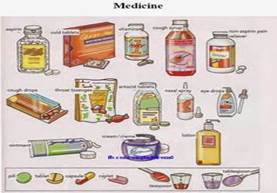
A drug may be classified by the chemical type of the active ingredient or by the way it is used to treat a particular condition. Each drug can be classified into one or more drug classes. Pharmaceutical or a drug is classified on the basis of their origin:
- drug from natural origin, or herbal, or plant, or mineral origin; some drug substances are of marine origin
- drug from chemical as well as natural origin, derived from partial herbal and partial chemical synthesis, e.g. steroidal drugs
- drug derived from chemical synthesis
- drug derived from animal origin, e.g. hormones and enzymes
- drug derived from microbial origin, e.g. antibiotics
- drug derived by biotechnology, genetic-engineering technique, e.g. hybridoma
- drug derived from radioactive substances.
Classes of medicine are antipyretics(reducing fever(pyrexia); analgesics (reducing pain (painkillers); antimalarialdrugs (treating malaria); antibiotics (inhibiting germ growth); antiseptics (preventing germ growth near burns, cuts and wounds); mood stabilizers; hormone replacements; oral contraceptives; stimulants; tranquilizers; statins.
The Anatomical Therapeutic Chemical (ATC) classification systemdivides the drugs into different groups according to the organ or system on which they act, and according to their chemical, pharmacological and therapeutic properties. Medicinal products are classified according to the main therapeutic use of their main active ingredient, on the basic principle of assigning only one ATC code for each pharmaceutical formulation (i.e. similar ingredients, strength and pharmaceutical form). A medicinal product can be given more than one ATC code if it is available in two or more strengths or formulations with clearly different therapeutic uses.
A drug can have several names. There is usually a genericname for a drug substance plus one or more brandnames. Generic namesfor drugs are chosen by a variety of official bodies. That means that these names sometimes vary from country to country. For example, the generic name for one common pain medication is acetaminophen in the USA. However in many countries the same drug is called paracetamol.
Drug manufacturers choose the brand names of their products. There can be many brands of a particular drug. A brand name is also sometimes called a “proprietary” name. The brand names are usually easier to say and easier to remember. They may be better known than the generic name.
VOCABULARY PRACTICE
LANGUAGE DEVELOPMENT
WORDS AND EXPRESSIONS
| analgesic (n) | ||
| antimalarial (adj) | ||
| antipyretic (adj) | ||
| assign (v) | ||
| ATC classification system | ||
| brand name | торговое название | |
| burn (n) | ||
| cut (n) | ||
| fever (n)=pyrexia (n) | ||
| generic name | родовое название | |
| hybridoma (n) | гибридома | |
| manufacturer (n) | ||
| marine (adj) | ||
| mood (n) | ||
| official body | официальные инстанции | |
| paracetamol (n) | ||
| pharmaceutical formulation | технология приготовления лекарст-венного средства | |
| proprietary name | патентованное название | |
| reduce (v) | ||
| replacement (n) | ||
| statin (n) | ||
| steroidal (adj) | ||
| tranquilizer (n) | ||
| wound (n) |
READING
ADVERSE SIDE EFFECTS
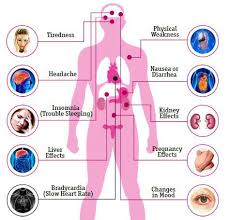
All medications can cause unwanted effects because it is impossible to design a drug that acts only on its target organ or cell. Unwanted responses vary from person to person and from one drug to another; some may cause nausea and constipation, others may produce headache or insomnia, and still others may produce rashes and other allergicconditions. Some side effects appear immediately, others show up years later. In many instances, adverse effects lessen with time or can be eliminated by altering the dosage or trying an alternate drug.
Before taking a medication, it is necessary to ask the prescribingdoctor and the pharmacist to list the most common side effects, also the most dangerous ones, and what to do if they should occur. Prior to using it, the doctor should get information if you have ever had either an allergic or severe reaction to a particular drug, food or any other substance, such as food dyes or sulphites. In addition, be sure to make a note of all reactions you have when you begin taken a new medication and relate them to your physician when you have a follow-up visit.
Some people faced an increased risk of adverse side effects because they fall into one of the following groups: children, the elderly, or pregnant and breast-feeding women.
In regard to taking medications, anyone under the age of 12 should be considered as a child. Usually, infants and children are given lower dosages of drugs than adults to compensate for their smaller size and lower body weight. Also, some medications that are safe for adults may be dangerous for a child.
As people age, the liver becomes less efficient at breaking down drugs, and the kidneys may take longer to excrete toxic remnants. As a result, even a regular dosage may produce severe side effects. This risk is complicated by the fact that many elderly people take different drugs simultaneously. Problems usually can be prevented by prescribing a reduced dosage and paying attention to potential drug interactions.
Almost any medication taken by a pregnant woman travels through her bloodstream and into that of the fetus. Some drugs are known to cause birth defects; others retardgrowth and some cause fetal death. Therefore, any over-the-counter or prescription drug should be taken during pregnancy only after consulting a doctor. Similarly, most drugs taken by a nursing mother can pass into her breast milk and may harman infant. Consult a doctor beforehand about the safety of medication.
VOCABULARY PRACTICE
LANGUAGE DEVELOPMENT
WORDS AND EXPRESSIONS
| allergic (adj) | ||
| alter (v) | ||
| beforehand (adv) | ||
| breast milk | ||
| compensate (v) | ||
| consider (v) | ||
| constipation (n) | ||
| follow-up visit | последующее посещение | |
| food dye | пищевой краситель | |
| harm (v) | ||
| in regard to | относительно, что касается | |
| insomnia (n) | ||
| lessen (v) | ||
| medication (n) | препарат, лекарство | |
| nausea (n) | ||
| nursing mother | ||
| pregnant woman | ||
| prescribe (v) | ||
| prior to (conj) | до, перед | |
| rash (n) | ||
| relate (v) | ||
| remnant (n) | ||
| retard (v) | ||
| similarly (adv) | ||
| simultaneously (adv) | ||
| sulphite (n) | ||
| vary (v) |
UNIT 36. DRUG INTERACTIONS
In this unit:
· speaking on drug interactions
· discussing the types of drug interactions
· Direct and Indirect Speech
READING
DRUG INTERACTIONS
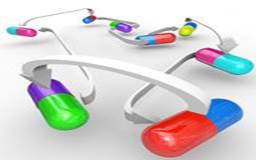
Drug interactions (DIs) represent an important source of medication errors. An interaction occurs when the effects of one drug are changed by the presence of another drug(s), food, drink or an environmental chemical. When a therapeutic combination could lead to an unexpected change in the condition of the patient, this would be described as an interaction of potential clinical significance.
There are various factors, contributing to the occurrence of DIs. This includes multiple pharmacological agents, multiple prescribers, use of non prescription drugs, drug abuse and patient noncompliance. Various patient variables are also implicatedfor drug interactions, i.e. age, genetic factors, disease states, renal function, hepatic function, alcohol consumption, smoking, diet, environmental factors, individual variations, etc. Although in a limited number of cases, prescribers use known interactions to enhance efficacy in the treatment of several important conditions, patients are exposed to unnecessary risks by the concomitant prescription of agents that have been shown to interact adversely. Many interactions are predictable, i.e. they can be avoided, if the prescriber keeps himself updated with the clinical pharmacology of the medicines involved.
DIs may be classified as drug-disease interaction, drug-herbal interactions, drug-drug interactions and the miscellaneous type.
Drug-disease interaction dispossesses considerable threats in patients suffering from various disease conditions involving renal and hepatic impairment and other conditions. Conditions that place patients at high risk for drug interactions are aplastic anemia, asthma, cardiac arrhythmia, intensive care patients, diabetes, epilepsy, and hypothyroidism. It is therefore always important to assess such conditions and adjust the required doses of the drugs.
In the past, very few case reports related to herb-drug interactions were reported. Recently, however, there have been several reported cases of possible herb-drug interactions. Herbal products can produce adverse drug reactions due to lack of standardization of content of natural products, variations in the strength of the active ingredient, contamination by fungalorganisms, and adulteration with other potentially harmfulnatural products.
Drug-drug interactions include both prescription and over-the counter (OTC) medicines. For example taking the antibiotic Ciprofloxacin with antacids lowers Ciprofloxacin’s effectiveness. Similarly, there can be major drug interactions if Digoxin and Amiodarone are taken together. This combination can lead to increased Digoxin toxicity. In general, among the different types of DIs, the DDIs gain more importance because of their high incidence rate and the serious outcomes.
Miscellaneous drug interactions include interaction of drugs with dietary supplements, food and beverages, cigarette smoke, etc. Vitamin K is present in many vegetables. It promotes production of blood-clotting factors that may reduce the effectiveness of anticoagulants medicines like Warfarin. There have been also reports of reduction in the efficacy of Warfarin with intake of huge quantities of ice cream.
Drug interactions are often neglected and not considered seriously. DIs alone, can be a very important contributory factor for the occurrence of adverse drug reactions. As polypharmacy is one of the cardinal causes for DDIs, a thorough review of the patient condition and medications should be carried out before prescribing or while adding new drugs to their existing drug regimen. If a particular DI is unavoidable, the patient experiencing the DI should be monitored for the safety and efficacy of the drug provided.
VOCABULARY PRACTICE
LANGUAGE DEVELOPMENT
WORDS AND EXPRESSIONS
| adjust (v) | ||
| adulteration (n) | подмешивание | |
| adversely (adv) | ||
| antacid (n) | ||
| anticoagulant (n) | ||
| aplastic anemia | апластическая анемия | |
| assess (v) | ||
| avoid (v) | ||
| beverage (n) | ||
| blood-clotting factor | фактор свертывания крови | |
| cardinal (adj) | ||
| carry out (v) | проводить, выполнять | |
| concomitant (adj) | сопутствующий | |
| consumption (n) | ||
| contamination (n) | ||
| contribute to (v) | ||
| contributory factor | предрасполагающий фактор | |
| dispossess (v) | ||
| drug abuse | лекарственная (наркотическая) зависимость | |
| drug regimen | схема приема лекарственных средств | |
| enhance (v) | ||
| error (n) | ||
| experience (v) | ||
| fungal (adj) | ||
| harmful (adj) | ||
| hypothyroidism (n) | ||
| ice cream (n) | ||
| impairment (n) | ||
| implicate (v) | вовлекать | |
| intake (n) | ||
| intensive care | интенсивная терапия | |
| miscellaneous (adj) | ||
| neglect (v) | ||
| noncompliance (n) | несоблюдение, неподчинение | |
| outcome (n) | ||
| polypharmacy (n) | одновременное назначение нескольких лекарственных средств | |
| predictable (adj) | предсказуемый | |
| promote (v) | ||
| provided (pp) | предусмотренный | |
| significance (n) | ||
| suffer from (v) | ||
| thorough review | тщательный осмотр | |
| threat (n) | ||
| unavoidable (adj) | неизбежный | |
| update (v) | ||
| variables (n) | показатели |
READING
VOCABULARY PRACTICE
LANGUAGE DEVELOPMENT
Choose the necessary word.
- Nick is (happier, the happiest) boy that I know.
- Of the six cars, I like the silver one (better, best).
- Jane’s notebook is (cheaper, the cheapest) than mine.
- This is (more delicious, the most delicious) cheese-cake I have ever had!
- This bookcase is (more beautiful, the most beautiful) than that one.
- Do you feel (better, the best) today than yesterday?
- I think my cat is (prettier, the prettiest) of all the cats in the world.
- Steve Jobs is (more famous, famouser) than Stephen Wozniak.
- This week the weather is (hotter, more hot) than last week
- Our new house is (more expensive, expensiver) than the old one.
- Girls are usually (cleaner, more clean) than boys.
- Chemistry was (harder, the hardest) subject at school
WORDS AND EXPRESSIONS
| aerosol (n) | ||
| BCG vaccine | вакцина БЦЖ | |
| by gravity | самотеком | |
| convenient (adj) | ||
| deplete (v) | ||
| dermal application | путем нанесения на кожу, накожно | |
| drip set | капельница | |
| emergency (n) | ||
| for any reason | по какой-либо причине | |
| graduated bottle | флакон с делениями | |
| infusion (n) | вливание | |
| instead of | ||
| intradermal (adj) | ||
| intramuscular (adj) | ||
| intravenous (adj) | ||
| irritant (adj) | ||
| loose (adj) | рыхлый | |
| necrosis (n) | ||
| needle (n) | ||
| nitroglycerin (n) | ||
| penetrate (v) | ||
| permeable (adj) | ||
| permit (v) | ||
| potent (adj) | ||
| preferable (adj) | ||
| quick on the uptake | быстро поглощать | |
| rapidity (n) | ||
| rate (n) | ||
| retain (v) | ||
| route of administration | метод назначения | |
| subcutaneous (adj) | ||
| sublingually (adv) | ||
| syringe (n) | ||
| tolerate (v) | ||
| topically (adv) | ||
| vascularised (pp) | снабженный кровеносными сосудами | |
| volatile (adj) | летучий | |
| vomiting (n) |
INDEPENDENT STUDENTS’ WORK
LIQUID DOSAGE FORMS
In this unit:
· speaking on drug dosage forms
· discussing types and properties
of liquid dosage form
READING
1. What do we call a drug dosage form in other words?
2. What is needed for protection of drug from various harmful factors?
3. What types of liquid dosage forms do you know?
LIQUID DOSAGE FORMS
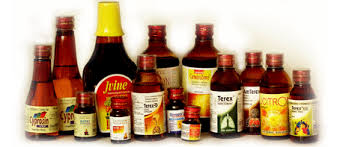
A drug is defined as a substance used for diagnosis, prevention and treatment of disease. A dosage form of a drug is a product suited for administrationto the patient by various routes. Suitable dosage forms are needed for protection of the drug from destructive influences of atmospheric oxygen or moisture, from gastric acid on oral administration, to mask bitter taste and bad odor, to provide extended drug action, through controlled release mechanism, etc. Following agents are used with drug for suitable dosage form:
- Vehicles. These are used to dissolve or suspend drugs. They are also used to mask bad taste of drug.
- Coloring Agents. These are harmless substances used for coloring drugs to make them more acceptable for patients.
- Sweetening Agents. Solid sweetening agents as sucrose and cane sugar are usually used for syrups and elixirs. Saccharine, about 500 times sweeter than sugar, is non caloric and may be used by diabetics and obese patients to restrict their carbohydrate intake. But there is a suspicion that saccharine is carcinogenic.
- Flavoring Agents. “Flavor” refers to a mixed sensation of taste, touch, smell, sight and sound. The four primary tastes are sweet, sour, bitter, and saline. Proper selection of flavor has to be made to mask nauseating medicines of bitter sour, saline, and oily tastes.
Liquid Dosage Forms.
Aqueous solutions contain one or more drugs dissolved in water. There are two categories: solutions for oral use and solutions for injections, which are sterile liquids or suspensions, packed in suitable containers. The aqueous vehicles mostly used for preparing injections are water for injection and sodium chloridesolution. Injections are available in sealed glass ampoules or vials. Aqueous suspensions contain one or more chemical substances dispersed in water by means of harmlesssuspending agents. These are preparations of fine and undissolved drugs dispersed in liquids. Suspensions for oral use are:
- Emulsions: suspension of fats or oils in water with aid of emulsifying agents. The oil particles are coated with emulsifying agent so that they do not coalesce as the surface tension between the oil and water is lowered. Thus, a stable suspension is produced.
- Gels are colloidal suspensions of aqueous inorganic substances.
- Magmas are bulky suspensions of substances poorly soluble in water. They are also called milks as they are white in color. Magmas and gels are similar except for the particles suspended in magma are larger. Thus, magmas tend to separate on standing and require a “shake well before use” on a label.
- Mixtures are preparations where drug or drugs are in solution or suspension meant for oral administration. Spirits or essences are concentrated alcoholic solutions of volatile substances. Dissolved substance may be solid, liquid, or gaseous. Most spirits contain 5-20% of the active material. Spirits containing volatile oils are prepared by diluting 10 volumes of oil with 90 volumes of alcohol, and coloring material may also be added. Many spirits are used as flavoring agents. Extractive preparations are made from medicinal plants and contain the active substances in the aqueous-alcoholic solvent. Tinctures are alcoholic or aqueous-alcoholic preparations made of medicinal plants.
VOCABULARY PRACTICE
LANGUAGE DEVELOPMENT
SOLID DOSAGE RORMS
In this unit:
· speaking on solid dosage forms
· discussing types and properties
of solid dosage forms
· Articles
READING
SOLID DOSAGE FORMS
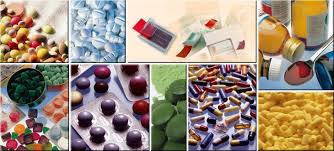
Some commonly used solid dosage forms are powders. These are medicinal substances in a dried and finely groundform. Powders are used both internally and externally. Effervescentpowders when dissolved in water liberate carbon dioxide which makes the preparation more palatable.
Capsules are small containers usually made of gelatin. Capsules are one of the most popular forms for oral administration of powders, oils and liquids. They dissolve readily in the stomach and make the contents available for absorption. Capsules may be coated with substances that resist the action of gastric juice and do not disintegratein the stomach, but on reaching the intestines they dissolve in the alkaline juices and release the drug. Sometimes capsules may be administered rectally or vaginally.
Tablets are solid dosage forms containing granulated or powdered drugs that are compressed into round or other shapes. They may be made with or without diluents and may differ greatly in size, shape and weight. In addition to the drug, tablets usually contain diluents, binder, disintegrator, and lubricant. Diluents are used when the amount of active ingredient is small, and the lubricant keeps the tablet from sticking to the machine. Disintegrator like starch fills up the tablet to split readily in the stomach, as starch swells up in contact with moisture. Tablets may be coated to enhance their palatability.
Pelletsare sterile spheres formed by compression.
Pills are powdered drugs mixed with adhesivesubstances. Nowadays these have been replaced by tablets and capsules.
Troches and lozenges are flat round preparations that are kept in mouth till they dissolve liberating the drug or drugs they contain.
Dosage Forms for External Administration
Liniments are liquid suspensions applied onto the skin by rubbing. They usually contain an analgetic to relieve pain or rubefacient to redden the skin.
Lotions are liquid preparations applied onto the skin without rubbing. Lotions may be protective, emollient, cooling, cleansing, astringent or antipruritic depending on their content.
Ointments are semisolid greasy substances intended for local application to the skin or mucous membranes. Ophthalmic ointments are sterile medicated ointments to be used in the eyes.
Pastes are ointment-like preparations of one or more drug substances and some adhesive material. They are applied to itching surfaces and provide greater protective and more absorptive action than ointments.
Suppositories are mixtures of drugs that can be pressed in shapes suitable for insertion into a body cavity or opening.
Sprays are solutions of one or more drugs in oil or water administered in atomizers.
Inhalants are drugs which because of their high vapor pressure can be carried into the nasal passages with the inhaled air.
VOCABULARY PRACTICE
LANGUAGE DEVELOPMENT
WORDS AND EXPRESSIONS
| adhesive (adj) | ||
| alkaline (adj) | ||
| atomizer (n) | ||
| binder (n) | ||
| capsule (n) | ||
| disintegrate (v) | ||
| effervescent (adj) | ||
| enhance (v) | ||
| gelatin (n) | ||
| greasy (adv) | ||
| ground (v) → grind (pp) | ||
| inhalant (n) | ||
| insertion (n) | ||
| liberate (v) | ||
| liniment (n) | ||
| lozenge (n) | ||
| lubricant (n) | ||
| medicated (pp) | содержащий лекарственное вещество | |
| nasal passages | носовые ходы | |
| palatable (adj) | ||
| paste (n) | ||
| pellet (n) | драже | |
| powder (n) | ||
| rectally (adv) | ||
| relieve (v) | ||
| resist (v) | ||
| rubbing (n) | ||
| semisolid (adj) | ||
| split (v) | ||
| starch (n) | ||
| sterile (adj) | ||
| stick (v) | ||
| suppository (n) | ||
| swell up (v) | ||
| troche (n) | ||
| vaginally (adv) | ||
| vapor (n) |
UNIT 31 . MEDICINES OR PHARMACEUTICALS
In this unit:
· talking about medicines
· speaking on research and testing drugs
· discussing the ways of taking drugs
· Present Simple vs Present Continuous
READING
